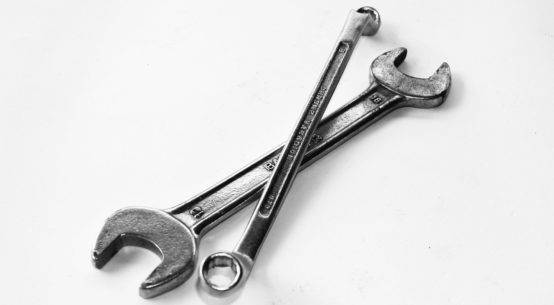
Congratulations New ATV Owner!
By the time you find this and begin to read you have probably unwittingly overlooked some very important things. Perhaps you have also already had your first mishap. Hopefully no one was seriously injured. Well, the truth of the matter is, almost everyone who gets one has a similar experience, including me. That’s why I thought it would be a good idea to share the wisdom of experience with you in the hope that maybe you can avoid some of the pitfalls.
- If you have children, you may as well count on them getting on and taking it for a spin maybe even a tumble or a roll. If not with you, then without you. It would be better if you let them do it with you. At least you will be around to provide medical support when needed. Every kid in your neighborhood will want a turn on it. If you allow it at all, you’d better get written permission from the parents which specifically waves all liability from you personally and professionally.
- Set rules for when the machine can and can’t be used and who will be permitted to ride/drive and where it is ridden.
- The state of Utah has a program to train younger ATV riders. Enroll in it immediately by calling 1-800-OHV-RIDE. It is as good for adults to be well trained in the sport, as it is youth. There are lots of easy and quick ways to sustain serious injury, even death, so obtain the training offered by the state. If you buy your machine new your manufacturer may even pay the cost of the class.
- Most new ATVs come with a safe riding manual. Read it and make sure that everyone who rides it, reads it before they get on the machine. This especially applies to your nephew who is going to streak off like a bat out of …. the moment you are out of sight.
- Don’t ride your ATV on the streets in your neighborhood. This is an excellent way to have your machine impounded by the local constabulary.
- Insist that all riders (including non-recommended passengers) wear a helmet at all times. The law requires everyone under the age of 18 to wear one while riding an ATV. Common sense dictates that those over 18 wear one. If not, then just keep in mind that hospitals make big money caring for the last minutes of life of such liberated spirits. A friend of mine in the STAR riders association mentioned that he saw a group of people on a tour with a popular ATV event. He noticed that none of them, including their youthful riders, had on a helmet. When he mentioned to one of them that it was required, he was told, “That’s okay, we have a deputy sheriff riding with us.” He couldn’t see how having a deputy sheriff riding with you will make you safer than wearing a helmet. He is right! All a deputy can do for you is call an ambulance once you’ve already made yourself a grease spot on the hillside somewhere.
- Be thoughtful of your neighbors. Don’t make their property your practice yard, without their specific consent.
- Find out where you can ride legally. A deserted lane in a rural area does not mean it is a legal place to ride.
- Ask others who have ATVs where they ride and try to go out with them to become aquatinted with the area.
- Be a good sportsman. Make every area better for your having been there. Take home more garbage than you bring.
- Get involved as an individual in supporting the rights to ride ATVs on public lands. Don’t leave this to others or you will lose your favorite riding areas. The Southern Utah Wilderness Alliance is doing all they can, with full time employees, to block your use of the State of Utah. Your letters to the Forest Service, and other political advocates can stop this.
- Though your machine is quite capable of blazing new trails, stay on existing paths and trails. There really are plenty available. We should use what we have without trying to make new ones.
- Many ATVs will go 70 miles per hour. Would you go 70 in your car if it had no doors, windows, seat belts, bumpers, or without a clean dry surface? None of these things are available when you are out in the field. Save yourself and save others. Please.
- Drive with extreme caution, go slow, enjoy the beauty that nature affords you. ATV trail riding is not a race, it is an enjoyment. Keep it that way.
- A few items of safety that you may find useful are a GPS (Global Positioning System) and FRS radios and the cell phone.
- You can spend megabucks on a GPS, but there are also some economic models out there too (like Garmin eTrex). If you get in a situation where you have turned yourself around until everything looks the same and you are lost, your GPS will save your bacon. Just be sure you turn it on before you leave the trail head.
- FRS radios are one of the best solutions for keeping in touch with each other on the trail. You can buy a pair of these for $100.00 and with a VOX attachment you can use it hands free. It won’t work so great if you have a real noisy machine. If you have line of sight with your party you are likely to be able to be in touch with them. They work much better than the old CB’s of the early 70’s.
- Let’s not forget the cell phone. These units won’t work everywhere out in the mountains, but they do work most everywhere there is some proximity to a paved road that is well traveled. Once again, they can save your bacon if there is a mishap of some kind.
Trail Manners
Now that you have purchased a new ATV and understand some of the best practices for operating your ATV, it is time to turn your attention to manners that are essential to an organized and safe ride for everyone on the trail systems.
- You may enjoy music, but there may be others at the trailhead that enjoy the quiet wind at their ears. If you want to listen to your music, keep it low enough to protect the rights of others to do their thing too. If you like to blast your music, do it in your bedroom, not at the trailhead.
- Park your vehicle so that others can easily get past you and around you. Don’t block other trailers who are not in your party.
- Be friendly to other people at the trailhead. Learn as much as you can about their ATV wisdom. Share yours with them. Every owner loves to be complimented on their machine. You may need them to rescue you sometime today. If your path is paved with friendship you are much more likely to get help when you need it.
- There is often the inclination to show off in trailhead areas. This is the source of many accidents with innocent bystanders. Please refrain from shows of speed and stupidity at all times but especially in the staging area at the trailhead. Doing doughnuts in the loose gravel at the trailhead is also poor show of respect our riders have for the accommodations provided. Please, just don’t do it.
Muffler/Spark Arrestor Warning
One of the first impulses you will have, if you are into speed and power, is to modify the socks off your ATV. This will oft times include a “high performance” exhaust system. These are excellent modifications for the race track, but don’t expect to be taking your machine into the mountains in any forest service or BLM land. Mufflers that don’t have a Forest Service approved spark arrestor on them are subject to a fine of $5,000, and potential immediate impoundment, at the discretion of the officer. Now I ask you, is the 5% more power you get from your ATV by modifying the exhaust system really that valuable to you? You might just as well weld your ATV to the floor of your garage, because that will be the only place you can legally turn over the engine after you’ve made those mods.
Winch Wisdom
A lot of our fellow riders get the winch when they buy their ATV. It is a common add-on at a discounted price, but the discounted price does not include the installation of the winch. “Well, anyone with a set of tools can do this,” you confidently say. (While your wife shakes her head from side to side while standing just two feet in back of you.)
The first thing you know you have your winch out of the box and the instructions on the seat of the ATV. The pictures seem to make the most sense, but you follow the step by step instructions anyway. About half way through the process you realize that the person who wrote the instructions has never really installed a winch. When it gets down to tapping into the hot wire you have a big question as to the right wire…… Well, here’s some sage advice from one of our readers who faced the same dilemma.
“Oh yes. When installing my winch, I used a voltmeter instead of a test light to find a wire that was hot when the key was turned on. First wire I found showing battery voltage DID NOT HAVE ENOUGH CURRENT TO OPERATE THE SOLENOID OR TO ILLUMINATE A TEST LIGHT! When the solenoid was wired in and the key turned on, I heard a faint click in or near the instrument screen but nothing at the solenoid. Voltage reading at the hotline was only 2v when solenoid was wired. I thought maybe I had a bad solenoid, but when I tested it across the battery terminals, it clicked just fine. Found another wire with the test light and now my winch works fine. I don’t have a wiring diagram, so I don’t know what the low-amperage line was to/from. I’m guessing it was downstream of the instrument screen but upstream of ground. Moral: Use a light, not a voltmeter, to find your key-on hot wire.”
More than one ATV has gone up in flames when the wrong wire was attached to the solenoid. If you are lucky, all you will do is fry the wire, not the solenoid or the ATV totally. You may attach it to another wrong wire that will seem to work fine but the first thing you notice is that you battery is dead all the time. Congratulations, you found the hot wire to the ignition switch, not the “key on hot wire” from the ignition switch. Use the above mentioned test light to find the wire that is not hot when the ignition is off and you are there.
Your ATV is built to carry loads. Whatever load you carry you need to be sure that the weight is distributed as evenly as possible so that you don’t increase the possibility of a roll over. Manufacturers will disclaim all liability for any injuries and damages done if you attach any accessory to your machine. Who can blame them, even if they make and sell accessories, there are so many different options it would be impossible to guarantee performance and safety with so many different combinations possible. For more information on accessories, go to our Accessories page.




